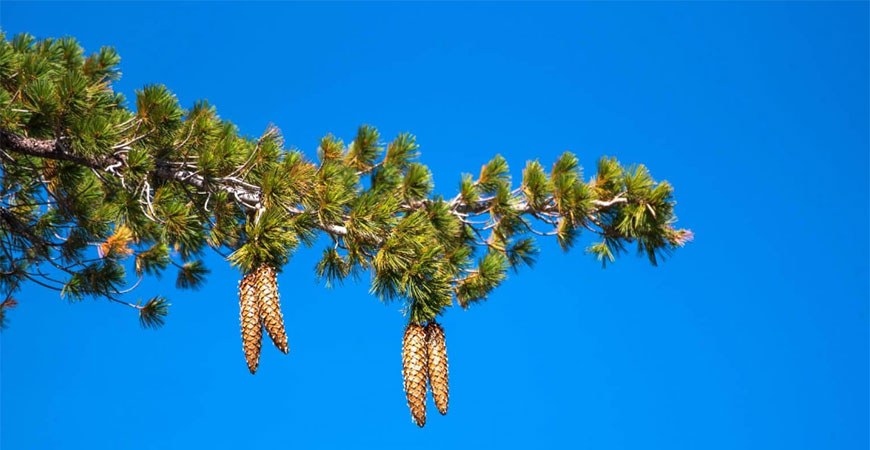
Sugar pines are the tallest pine species in the world, and they only grow along the West Coast of North America. They are a valued source of timber with cones as large as an adult’s forearm. But they face several problems that a new paper argues should be quickly addressed.
The sugar pine population has been declining because of changing fire patterns, drought, bark beetle mortality, a disease called white pine blister rust – and now the impacts of climate change.
One way that has been proposed to deal with the impacts of the warming climate is to use seedlings adapted to warmer conditions instead of local seed sources when reforesting after disturbances such as wildfire.
This is similar in concept to a farmer in Michigan shifting to growing varieties of corn or peaches originally bred to do well in Tennessee as local temperatures increase. However, if seed sources are moved too far, too fast, they might suffer cold damage if planting sites are not yet warm enough for them, or they might be poorly adapted to the planting sites for other reasons.
Life and Environmental Sciences Professor Emily Moran, who studies plant ecology and evolution, and her research team have been looking at sugar pine seedling performance in post-fire restoration plantings and what best predicts their survival and growth.
The team revisited a U.S. Forest Service experiment that planted local and non-local sugar pine seeds in a burn scar in Eldorado National Forest between 2017 and 2019.
Moran’s team, which included four UC Merced undergraduates – Veronica Magana-Buie, Roxana Khalili, Emily Semans and Cassandra Hay – remeasured seedlings in 2020 and 2021 to track their survival and growth, collecting needles for genetic analysis in the first resurvey. Scientists have worked for decades to develop rust-resistant seed sources, and because of this work sugar pine is one of the few pine species with a fully documented genome sequence.
Moran modeled survival and growth as a function of the planting site, seedling age, seedling height, and either seed source area or proportion of genetic markers predicted to perform well in the planting area based on a separate genotype-environment analysis.
Genotype was not a good indicator of seedling performance but Moran attributes this to the analysis linking genotype to home climate being performed on a small set of genotypes from a different geographic area in California.
“This is important, because it means that the transferability of genotype-environment relationships from one region to another needs to be carefully assessed,” she said.
However, including the seed source’s geographic origin improved predictions of seedling performance. Most notably, seed sources from areas at lower elevations or further south of the planting area that in the mid-20th century had a similar average temperature to the planting site now – and which are drier than the planting site – performed as well as or better than the local seed sources, while seed sources from colder or wetter areas at higher elevations performed worse.
“This suggests that sugar pine populations are already becoming maladapted to a warming climate, and that matching past seed source climate to current or near-future planting site conditions may improve the success of restoration plantings,” Moran said.
Moran said she was surprised to find in the initial data analysis that the field sites had already warmed by about two degrees Celsius, or about 3.5 degrees Fahrenheit, just since the mid-20th century.
“That’s higher than the global average amount of warming over that time period, which just highlights how variable climate change can be geographically and the urgency of this issue for the Sierra Nevada,” she said.
The researchers detailed their work in a paper published in the journal Ecosphere.
Working under a climate grant that came through the University of California Office of the President, Moran said, she and her team plan to revisit the same field sites and other post-fire restoration experiments to assess whether seed sources of a variety of tree species that are predicted by The Climate Adapted Seed Tool (CAST) to perform best by 2045 are already growing and surviving better in the first five to 10 years after planting.
“Our sugar pine findings in this paper suggest that they will,” Moran said, because the seed sources predicted to do well in the future are those from warmer locations.
“If this is true in general, then this should boost the confidence of federal and state land managers that they can make use of tools like CAST to improve future forest function without seeing a big drop in near-term reforestation success,” she said.



